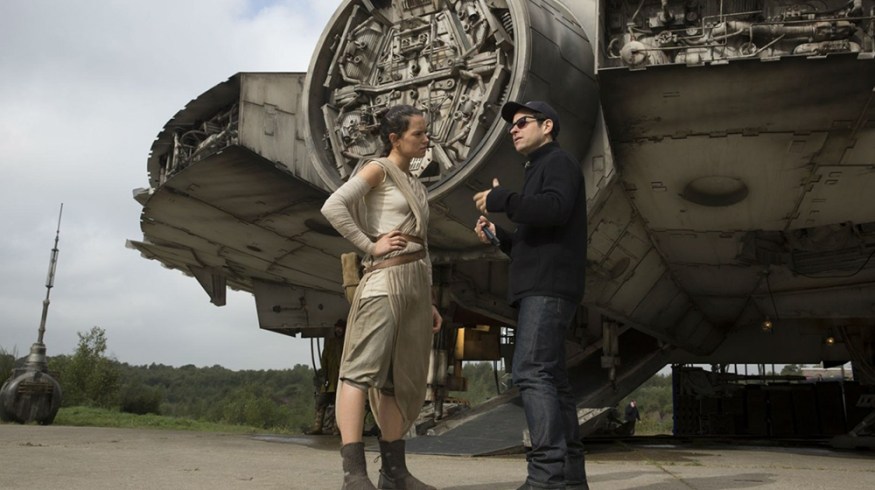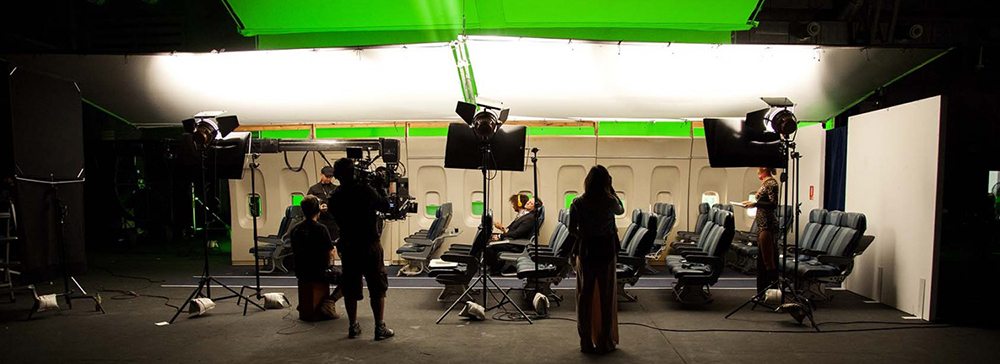
How to Create Great Production Design for Film & Video
Production design is the key to creating the world in which a film exists. Let’s take a look at what it takes to develop solid production design.
Top Image: JJ Abrams and Daisy Ridley on the set of Star Wars: The Force Awakens via Lucasfilm.
Production design is a huge component of the filmmaking or video production process. There’s a lot that you can convey to your audience through great production design. With this in mind, we’re going to rely on the experience and knowledge of Colin Gibson (Mad Max: Fury Road), Grant Major (Lord of the Rings: Return of the King), Rick Carter (Star Wars: The Force Awakens), and the legendary Stuart Craig (Harry Potter Series).
Through each one of these Academy Award-winning Production Designers, we’ll learn what we need to do to take our productions to the next level.
What Is Production Design?
Production design is the process of developing and creating the “look” of a film or video environment. This includes creating the initial concepts, building sets, fabricating costumes, developing makeup effects, and working with the VFX team. In the end, all of these sections come together to present the audience with visual information that establishes a sense of place and conveys an emotional response through the background elements, costumes, and props.
Who Runs the Design Team?
At the head of production design is the production designer or PD. The PD will work closely with the director and cinematographer to set the overall look of the film and to bring the director’s vision to life. They also oversee all aspects of the production design from concept to construction. However, they do not do this alone; there are several key crew members that work alongside the PD.
Production Design Team:
- Art Director (AD): works directly with the PD and oversees the draftsmen, storyboards, artists, and set decorators.
- Production Illustrator or Concept Artist: creates the initial sketches and designs alongside the PD and AD.
- VFX Coordinator or Supervisor: works with the PD to ensure CGI elements match the look of the practical set.
- Set Decorator: develops the look of the set through research and obtains items to fill the set.
- Set Dresser: arranges the items from the set decorator and ensures continuity between scenes.
- Costume Designer: works with the AD to develop the look of the characters, pays close attention to period and place.
- Makeup Artist: oversees all makeup aspects of the production, from simple adjustments to special effects makeup.
Why Is Production Design so Important?
As mentioned above, this is the process of building the physical look of the film. The set, costuming, and makeup design all need to be reflections of one another. If one of these aspects is off, then you run the risk of pulling your audience out of the experience.
One worrisome issue that production designers face in today’s industry is they must fight to retain control over the look of the film due to the reliance on CGI visual effects, as Grant Major mentioned in 2014.
You often have to fight for control of the look of the film when you have the production sub-contract out to digital companies these virtual environments. — Grant Major
In an interview with Deadline, production designer Colin Gibson stated that PDs need to push for practical sets and effects. He mentions that audiences today are far more impressed when a set is practical and crafted by an amazing production design team, which was the approach he took when designing Mad Max: Fury Road.
You still need to get the hair up on the back of people’s necks. You still need real physics. — Colin Gibson
Of course, there’s no stopping the advance of digital filmmaking. While some production designers see this as a possible issue, PD Rick Carter sees it as a natural progression toward a new era of hybrid filmmaking. These are the principles he employed when designing practical and digital elements for Star Wars: The Force Awakens.
There’s something that’s going on with the computer and with hybrid moviemaking… Just a lot that’s physical and a lot that’s digital, and it’s all part of the new vernacular. — Rick Carter
So, as you can see from the words of these Oscar-winning designers, production design is absolutely crucial to a film or video’s success. Let’s look at the collaborative process of designing a film or video.
Production Design: the Three-Part Process
1. Concept
Each production design begins with the production designer reading the script to determine the initial visual style. Once this is done, meetings with the director and cinematographer take place to solidify the design. To make this happen, concept illustrations and mock-ups are researched, produced, and sent to the director and producer for approvals. These concepts and mock-up designs cover set architecture, costumes, props, VFX design, and makeup.
Here’s a video from The Gnomon Workshop that features the legendary concept designer Syd Mead (Blade Runner, Tron, Aliens). In the video, Mead offers crucial design advice and demonstrates some of his storied talent and technique.
2. Planning
Once the designs are approved, the PD’s team moves into the planning stage. Additional research on build locations for the sets takes place. Blueprints for set construction are drafted. Also, budgets and property lists are developed to ensure that this portion of production doesn’t run beyond the funding allowed.
3. Fabrication
Once designs are approved and plans are finalized, the actual fabrication of the design begins. Construction crews come in and actually build the set if needed. Also, the set decorator, dresser, costume designer, and makeup artist begin the process of developing their individual parts of the production design. When this portion is done, the director, cast, and crew begin film production.
Have you had experience with production design? Share your story in the comments below!






